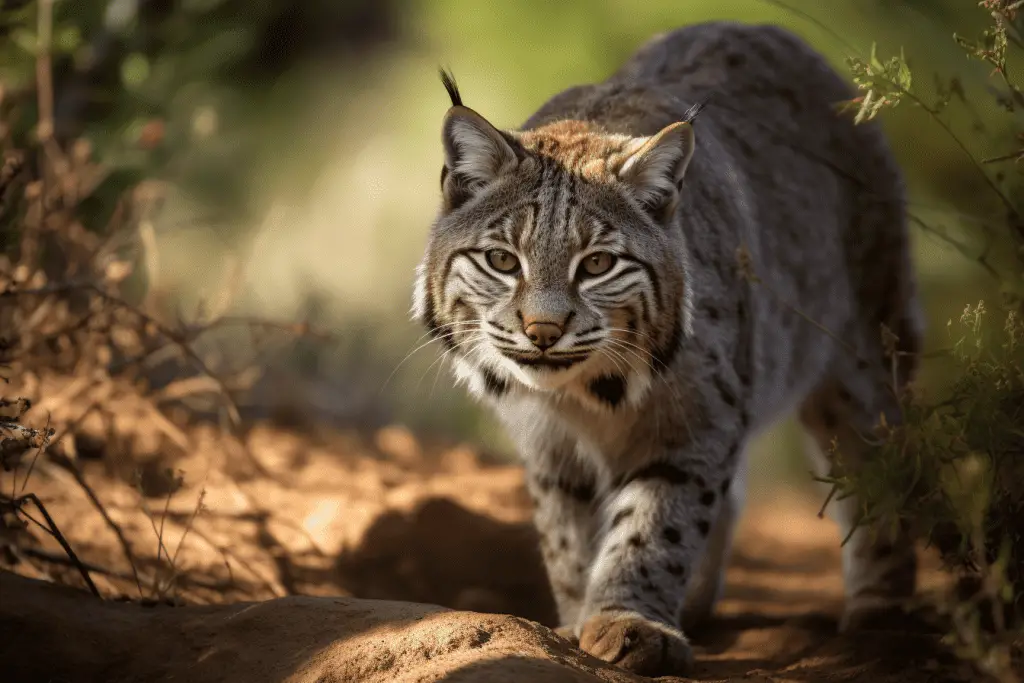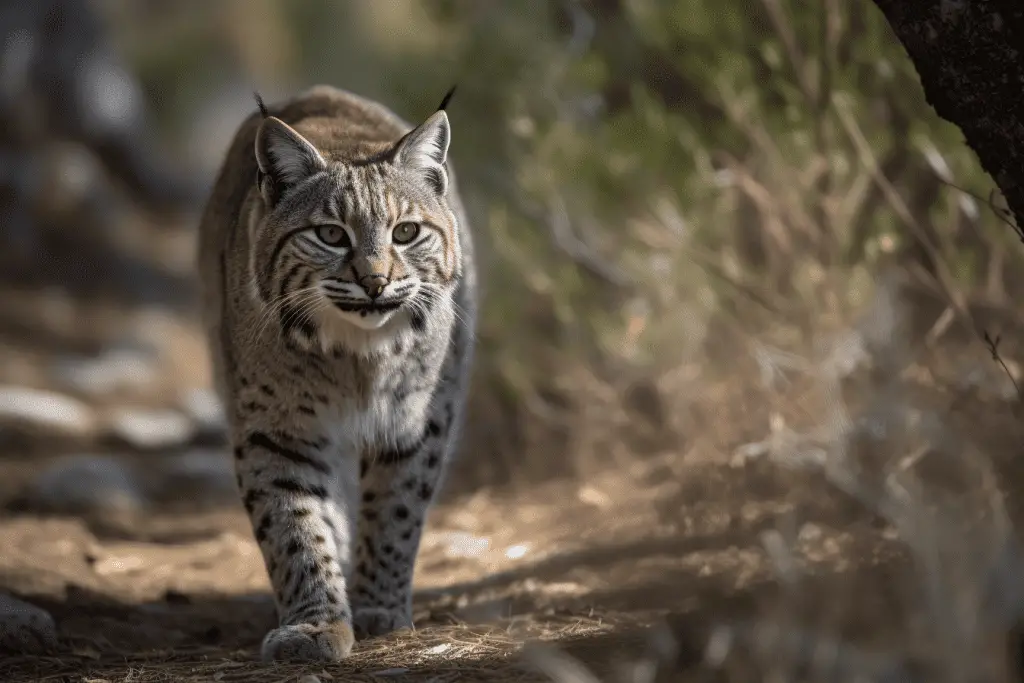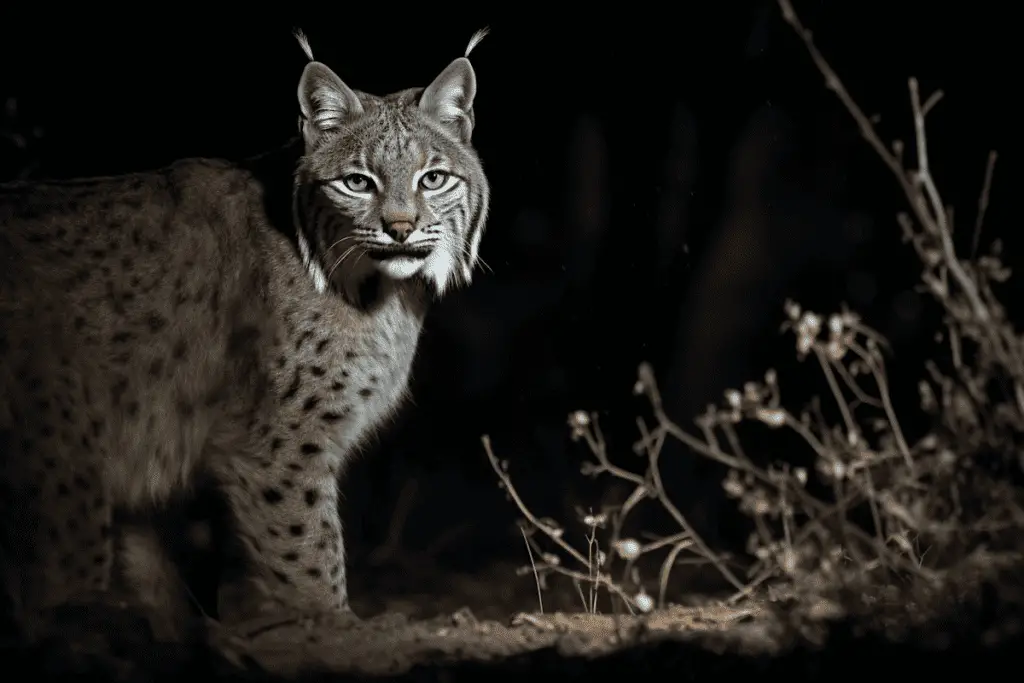Bobcat sightings are rare and as a result, you don’t see to many people talking about what to do if you see a bobcat while hiking. Don’t worry, I’ve got you covered. Here is what to do if you see a bobcat while hiking.
If you encounter a bobcat while hiking, it’s important to stay calm and avoid startling or threatening the animal. Make yourself look bigger by raising your arms or holding a jacket above your head, and make loud noises to scare the bobcat away. Do not run or turn your back on the animal, as this may trigger its instinct to chase.

Understanding Bobcats: Get to Know the Creature
Bobcats, named for their short, bobbed tail, are mid-sized wildcats found throughout North America. They’re adaptable creatures, you know. They can thrive in various environments – deserts, forests, suburban edges, and even swampland. However, they’re often elusive, being nocturnal and solitary by nature. So, if you spot a bobcat while hiking, consider it quite an exciting moment!
Bobcats are around 1 to 2 feet tall at the shoulder, with a length of about 2 to 4 feet – this includes that distinctive bobbed tail which is roughly 4 to 7 inches long. They’re not as large as mountain lions, but they’re generally twice the size of your average housecat. Their coat color can vary from light gray to brown and is often covered with distinct darker spots or streaks.
One of their most notable features is their tufted ears, which are often tipped with black or dark brown hairs. These ears not only give them a unique look but also provide excellent hearing, which comes in handy while hunting.

Their muscular bodies and strong legs are designed for strength and agility, perfect for pouncing on prey or climbing trees. And yes, they can climb trees! You might notice their large paws, which they use to navigate through their territory.
Keep in mind that while bobcats are beautiful to look at, they’re still wild animals. Always appreciate them from a distance and never try to approach or feed them.
First Contact: What to Do When You Spot a Bobcat
You’re hiking through a forest trail when you notice a four-legged creature slinking through the underbrush. Congratulations, you’ve just spotted a bobcat! Now, what’s next?
The most important rule is: don’t panic. Bobcats generally aren’t interested in people and prefer to avoid us when they can. Make sure you maintain a safe distance and don’t attempt to approach the bobcat, no matter how curious you are. Your safety, as well as the animal’s wellbeing, should be your top priority.

Try to make yourself appear larger by standing tall and raising your arms or opening your jacket if you’re wearing one. This can help deter the bobcat if it’s considering approaching you. It’s also a good idea to make some noise, like clapping your hands or speaking loudly, to scare the animal off.
But remember, don’t run or turn your back on the bobcat. This could trigger its chase instinct and turn a peaceful encounter into a dangerous one. Instead, slowly back away while keeping an eye on the bobcat until you’re a safe distance away.
What To Do If A Bobcat Attacks You While Hiking
It’s important to remember that bobcats are generally not a threat to humans. However, there can be situations where a bobcat might act aggressively – say, if it feels cornered, threatened, or if it’s a mother protecting her kittens. So, how should you handle an aggressive bobcat?
Don’t stay silent. Make noise to scare the bobcat off. You can shout, clap your hands, or bang pots together if you happen to have any on you. Get your bear spray ready if you have it. Just keep in mind that while bear spray does work on bobcats, it should be used as a last resort.
If a bobcat does attack, fight back. Use any available objects – sticks, rocks, your water bottle, even your fists – to fend it off. Aim for sensitive areas like the eyes and nose. While we hope it never comes to this, it’s important to know how to defend yourself.
After the Encounter: Steps to Take Post-Bobcat Sighting
So, you’ve had your bobcat encounter and lived to tell the tale. But what should you do now that the bobcat has moved on? Here’s the rundown.
Firstly, take a moment to calm down. It can be quite a thrilling experience to come across a wild animal like a bobcat. Once you’re calm, it’s a good idea to reassess your surroundings and make sure there aren’t any other bobcats or wildlife around that you should be aware of.
Next, consider your route. If you encountered the bobcat on your trail, it might be best to alter your path. Bobcats are territorial and you don’t want to risk running into the same one again, or worse, stumbling upon its den or kittens.
Finally, once you’re safely back from your hike, report the sighting to the local park or forest service. They’ll appreciate knowing where and when bobcats are being spotted. This information helps them manage wildlife in the area and can inform other hikers about potential encounters.
Steering Clear: How to Minimize Bobcat Encounters
While spotting a bobcat can be a memorable experience, it’s generally best for both humans and bobcats if encounters are kept to a minimum. So, how can you reduce the chances of bumping into a bobcat on your hiking trip? Here’s a quick guide.
Firstly, stick to marked trails and open areas as much as possible. Bobcats, like many wild creatures, tend to hang out in more secluded, forested areas, so by staying on well-traveled paths, you’re less likely to cross paths with one.
Try to avoid hiking at dawn or dusk. These are prime times for bobcats to be active as they’re typically crepuscular, which means they’re most active during twilight. If you’re hiking during these times, be extra vigilant and keep a lookout for signs of bobcats such as tracks or droppings.

Avoid carrying food that could attract bobcats or other wildlife. While bobcats are primarily carnivorous, the smell of food might pique their curiosity and draw them closer to human-inhabited areas.
Finally, hiking in groups can also deter bobcats and other wildlife from approaching. The noise and size of a group of people can often scare away shy creatures like bobcats.
Remember, while it’s exciting to spot wildlife, it’s also important to respect their space and help maintain the balance of our natural environments.
